Co-author Mike Warren Brown, former StrongFirst Certified SFG I Instructor
Note: Continued from Part I
All too often we see well meaning instructors fresh out of a certification and excited to teach progress way too quickly to snatches and cleans before a true foundation has been put in place. What you see is double cleans being performed with weights that are way too light, sometimes I think you may as well just do “heavy hands.”
Instead, we should use performance standards to dictate when new skills are introduced. Follow the path laid out by Pavel and other top instructors. Let’s take a look at how this works.
Lesson #1: Patterning
The focus is on learning to perform a proper hip hinge, squat, and get-up. At this point load is not a priority. We are looking for movement mastery. There are several great resources available for this. Brett Jones and Gray Cook teach the get-up in the highly recommended Kalos Sthenos. The squat and hinge pattern are coached in great detail in their follow up DVD, Dynami. Both of those programs will greatly benefit any serious coach.
Required reading for Lesson #1 is Simple & Sinister by Pavel. Read it while you practice your hip hinge pattern, get-up, and squat.
Before adding load, follow the advice of Brett Jones for the get-up. Complete 100 naked get-ups per side. Perform a 1000 unloaded hip hinges and 100 goblet squats before moving on to Lesson #2. This may take a few weeks or a few months. Have the courage to keep your students at this point as long as needed.
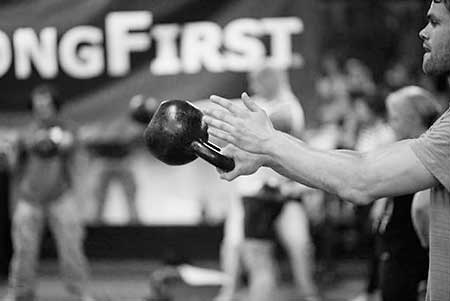
Lesson #2: Simple & Sinister
Now it is time to increase strength in the swing and the get-up. Simple & Sinister gives the performance standard to achieve (the “Simple Goals”). For men: 100 one-hand swings in five minutes in sets of ten and 5 get-ups per hand in 10 minutes using the 32kg for both. Women are expected to use the 24kg for swings and the 16kg for get-ups before moving on the Rite of Passage program.
Simple Goals:
- Men: 100 one-arm swings (sets of 10) in 5 minutes with the 32kg kettlebell; 5 get-ups per arm (sets of one) in 10 minutes with 32kg kettlebell.
- Women: 100 one-arm swings (sets of 10) in 5 minutes with the 24kg kettlebell; 5 get-ups per arm (sets of one) in 10 minutes with 16kg kettlebell.
Minimum Equipment Needs:
- Men: 16, 24, and 32 (one of each)
- Women: 8, 12, 16, and 24 (one of each, maybe more)
- Note: These kettlebells will get you through the Rite of Passage, too
Until you have reached these standards, do not move on to the next program, Rite of Passage from Enter the Kettlebell. You will have a much better chance of reaching the standards laid out in Rite of Passage if you first lay the broad foundation using Simple & Sinister. Now is the time to bring your performance up to these standards before introducing the clean, snatch, and press.
Along with reaching the Simple & Sinister goals you will also need to begin practicing the lifts used in Rite of Passage. Your clean, snatch, and press technique need to be strong before you can train them. Start incorporating a few practice sessions a week before your Simple & Sinister sessions. Don’t do this too early.
For men, I suggest you wait until you are working on compressing the rest periods with 24kg for the get-up and the 32kg for one-arm swings. For women, I suggest you be at the 10kg or 12kg for get-ups and If this does not make sense, you may want to reread the programming portion of Simple & Sinister.
Remember: Performance standards dictate complexity in training.
Read the technique portions of Enter the Kettlebell and begin practicing your snatches, cleans, and presses for 15-30 minutes before your Simple & Sinister sessions. Continue this until you have reached the Simple Goals. The next lesson is laid out in Enter the Kettlebell.
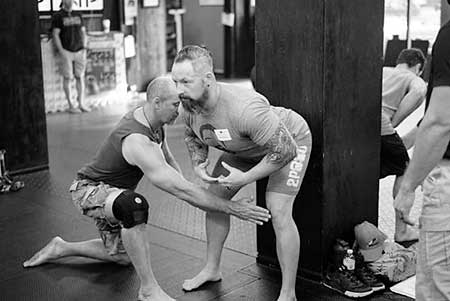
Lesson #3: Rite of Passage (Enter the Kettlebell)
If you took the time to master the swing, get-up, and goblet squat you are ready to delve deeper into the SFG system. The clean and snatch build off of the swing, while the press builds off of the get-up.
In the Rite of Passage (ROP) program, Pavel again introduces a set of performance standards, this time for the press and the snatch. Women will work up to a 1/3 bodyweight press, while men are expected to press half bodyweight. The snatch will be 200 reps in 10 minutes (the SFG standard is 100 in 5 minutes). The 24kg is used for men and either the 12kg or 16kg for women (depending on weight).
It takes focus to reach the ROP goals, but this narrow line leads to greater peaks when double kettlebell training is introduced.
We suggest you keep a detailed training log during this and all phases of your journey. This is also one of the best ways to gain insight into programming within the StrongFirst system. The second tenet, waviness of load, is at the forefront in the Rite of Passage program.
Rite of Passage Goals:
- Men: Press 1/2 body weight; snatch 200 reps in 10 minutes with 24kg
- Women: Press 1/3 body weight; snatch 200 reps in 10 minutes with 16kg (or 12kg for some)
Minimum Equipment Needs:
- Men: 16, 24, and 32 (perhaps one heavier kettlebell, too)
- Women: 8, 12, 16, and 24
There will be a need for double kettlebell in ROP. We suggest double 24 for most men and double 16 for most women (if you laid the foundation). Double 32 cleans is a shock to the system the first time you try it.
Lesson #4 will focus on double kettlebell training. You will start adding in low volume practice sessions of double on your ROP variety days. It is best to hold off introducing double practice until you reach a moderate level of strength in the press. Men should be closing in on 75 total reps with the 24kg during the heavy day and 12kg for women. At this point, begin adding in double practice sessions. Any earlier and you are just drawing your focus away from your Simple and Sinister training.
Remember: Performance standards dictate complexity in training.
Once you have nailed the Rite of Passage, it is time to move on the focused doubles training. With one caveat: reaching the Rite of Passage standards is a worthy achievement. At this point you may want to revisit Simple & Sinister with a heavier kettlebell. If your focus is still there, move right into Lesson #4.
Sinister Goals:
- Men: 100 one-arm swings (sets of 10) in 5 minutes with the 48kg kettlebell; 5 get-ups per arm (sets of one) in 10 minutes with 48kg ketlebell.
- Women: 100 one-arm swings (sets of 10) in 5 minutes with the 32kg kettlebell; 5 get-ups per arm (sets of one) in 10 minutes with 24kg kettlebell.
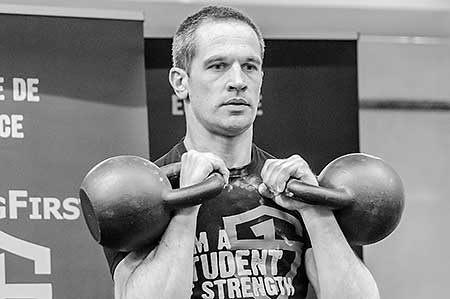
Lesson #4: Double Kettlebell
There are several good options available for double kettlebell training.
Option #1: Total Tension Complex program follow for six weeks, two weeks of Simple & Sinister, and then six more weeks with heavier kettlebells. We like this option the best for most people as an introduction to doubles work.
This program puts a large focus on the double press and double front squat within a complex. It is designed to last six weeks. In a recent conversation with Pavel, he suggested completing a six-week block and then following it with a two-week period of Simple & Sinister. After the completion of these eight weeks, then run another six-week block with a heavier pair of kettlebells. This is a fourteen-week commitment; in some places, you might have to get married.
Option #2: Return of the Kettlebell by Pavel. This program is demanding and the performance standards are high. Men work up to a bodyweight press (sum of both arms) and reps with double 32kg long cycle clean and presses based on bodyweight.
Return of the Kettlebell Goals:
- Men: Double press with a pair of kettlebells adding up to your bodyweight; Clean and jerk with 32s. You will shoot for reps based off of your bodyweight. Add a decimal point after the first two numbers and round up. For example, if you weigh 184. Then you make that 18.4 and then round up to 19. If you weigh 250 pounds, you only need to do 25. (Enjoy!) This is not an easy task.
- Women: In the book, women are not given standards.
Minimum Equipment Needs:
- The number of kettlebells is staggering. If you have finished the ROP standards, then you wil need two 16s, two 24s, two 32s, two 40s, and two 48s. And this is if you don’t have the intermediate kettlebells.
In conclusion, try to start looking at this single principle as you progress through training:
Performance standards dictate complexity in training.
The journey toward mastery is long and narrow. Follow the path that has already been laid out for you. Keep a detailed log and harvest the lessons learned on the way.
Oh, and, yes, it is that simple. But, as John Powell, the great discus thrower, has taught us: “It is simple, not easy.”
View Calendar of Upcoming SFG Level I Certifications
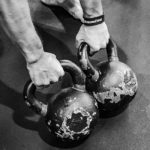
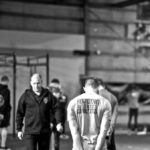
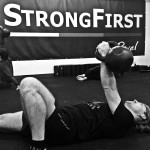
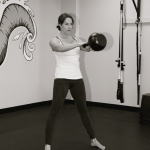

I achieved Simple long ago. Moving over to ROP just seems natural, and I am sure it is necessary somehow if I’m ever going to progress to Sinister. I can’t get to Sinister on my own. The doubles training is very helpful and very beneficial.
I can not get this article, and the path outlined here, out of my head. I am comitted to do this and curious how it will turn out. Will report back when i’am SIMPLE.
Idea for Return of the Kettlebell standards for ladies. A 2/3 of the men’s standard for upper body, i.e. 2/3 of bodyweight seems to work
I’m a 121LB female. My TGU is 32 kg and my double press is 20 kg bells, which I can currently C&J for about 15-20 reps. I think double 24s is a good goal for me, and I’ll only have to C&J those for 13 reps.
I think it’llbe challenging but definitely achievable for most advanced women.
This is a brilliant post, thank you so much!
Love it; wish I had read it years ago and not when I had finally gotten old enough and vaguely wise enough to draw some of the same conclusions of simplicity. Thanks for your work, I’ve bookmarked it and plan for it to be my next year or so in print.
Well, well well… had I only read these two posts a month ago, I probably wouldn’t be feeling as frustrated and confused while also dealing with various sore spots that I attribute directly to over doing it and moving too quickly… We always want to run before walking, until the “trip” teaches us to slow it down… I’ve clearly tripped… And so the kettlebell teaches me its primary lesson, patience little one patience. Simple first equals Sinister later! But make no mistake to any one reading this post (for those who don’t already get it) Simple might imply basic, but by no means equates to easy… so fast did I forget this principle…. Oh the humility! I cant thank the Strong First team enough for the invaluable programming and the attached insights into Hardstyle methodology that you all offer… I am so excited to dial it back to basics… While the kettlebell teaches patience, it is hard pressed to forgive haste…. So keep it simple stupid
Is there a best way to add the doubles practice during the ROP?
When you say 100 naked get ups offer side, 1000 unloaded hip hinges, and 100 goblet squats, is that a total threshold you have to reach before going on to the next phase? How many sets and reps are you doing for the hip hinge each day? I’m guessing you do the sets x reps from simple and sinister for the goblet squat and the get up.
Where would the 10000 swing challenge fit in?
100 swings with each hand? or 100 swings total, i.e. 50 swings with the left hand and 50 swings with the right hand?
Can you please clarify this for me. Thank you very much.
Did you read the book?
Patton: [referring to Rommel’s book, ‘Infantry Attacks’ or ‘Infanterie greift an’] Rommel… you magnificent bastard, *I read your book*!
100 total…
Hi Dan,
Thank you for clearing this up for me. I now understand the principles behind Intervention much better and it is actually very logical if I see it now. I understand now Strongfirst is about strengthening fundamental movement systems. My understanding of the kettlebell world just lit up.
Do you have this sort of progression model with barbells too? I’m now doing PTTP after being sick for two weeks and strength has gone done. This is just out of curiosity of understanding the SF-system better.
Thanks in advance,
Siemen
I’m not even sure you know what this question encompasses. What kind of barbell training? O lifts? Power? General BB? Sports assistant?
Didn’t think that one through, you’re right. I was thinking in terms of the powerlifts and MP. Just general strength training, no sports or anything
ROP is one the best programs around.
Very interesting. I was thinking to revisit the ROP after completing the Simple goals in S&S. I know someone asked this when S&S came out, but I couldn’t find the specific thread.
When going to the ROP, is it now advised to do the swings / snatches before the C&P ladders? Or complete as originally written?
Follow the program as written.
Rick, this is unanswerable. The “it depends” is sweeping down the mountain for this question. What equipment do you have, what do you want…
If you haven’t done the Right of Passage (passed it!), try it.
Dan,
To be more specific, I have a 16kg, 24kg, and a 32kg. I could purchase a 40kg if needed in the hopes that my UPS guy doesn’t throw his back out. I am not training for a specific sport, but rather to feel good, look good, and become more resistant to injury when playing recreational sports. Before reading your article, I planned to purchase the 40kg and continue simple and sinister once I felt I’ve mastered the 32kg. However, holding off on the 40kg and trying the ROP now seems to be a more logical next step, perhaps even cycling it with S&S. Since my wants are general, I am most interested in whichever option will be less likely to cause me injury.
Thank you again!
Wait….wait…wait a minute:
You used LOGIC on the internet for a strength and conditioning questions? I am sitting here beside myself…hard to do.
You can now SEE the importance of Mike’s work on this…I merely am the “eye candy.” You were able to look at your goals and toolkit and logically slide over to a program that WILL challenge you.
In 2008, I followed it line by line, word for word. I nailed the ROP goals (frankly, the 1/2 BDWT press was a non-issue but the SSST was a suckfest!). Then, I popped up to the 28 K that I had and did almost all of it again before my Cert.
It really opened my eyes about minimal movements with KBs…something I think we all forget sometimes.
I tell people:
TGU, Goblet Squat and Swing for every and all questions.
Then:
Clean and Press. (And the Pull Ups…I needed them)
After finishing this (with the weekly Snatch workout), you really know the basics and you got a lot of volume in.
So, start making decision two: what is my next bell? That will guide you and save you money.
Seriously, though, on the internet…you used logic? The world that I grew up in is changed forever.
shocking I know, ROP it is!
Dan,
That you for the succinct and awesome read!
To clarify, would moving on to the ROP after completing my simple goals be a smoother transition than moving up to a the 40kg on S&S? If so, what would be an appropriate bell to start with?
Thank you in advanced
Walter, your post deserves its own article. Excellent point here.
Wow, Dan!
Excellent guidance for those who do not know how to work through all of this. It can be overwhelming for many people, and that includes newly minted instructors and trainers, to figure out where to start and how to progress.
Really, the format can be applied to any type of training with any implement. Reach a set standard with the implement with basic movements and building basic foundational qualities before stepping up to the next level. Continue this stair stepping method until you reach the more complex movements and programing methods.
It’s not like climbing a ladder, it’s more like climbing a set of stairs with mile wide platforms at each step, so you spend some time on each new level before stepping up to the next level.
OF course, how wide each platform is will depend on the individual, but spending more time on any one level or step to “own” the standard at that level really is the key to doing well at the next increase in complexity.
Great stuff!
Good to see that Walter Dorey lives. Never seen you on the SF boards I think but remember you from the old DD board.
The article is awesome and something I wish I had when I started. It also reminds me, along with Walters excellent passage “Really, the format can be applied to any type of training with any implement. Reach a set standard with the implement with basic movements and building basic foundational qualities before stepping up to the next level. Continue this stair stepping method until you reach the more complex movements and programing methods.” with this article of standards http://danjohn.net/2013/04/strength-standards-sleepless-in-seattle/
Regressions are the best correctives came into a new light.
Thank you Dan, Mike and Walter.